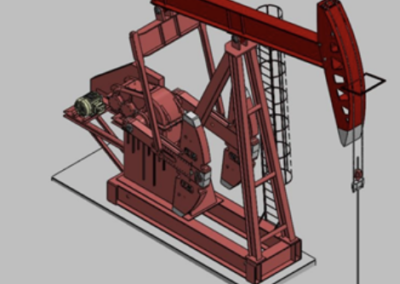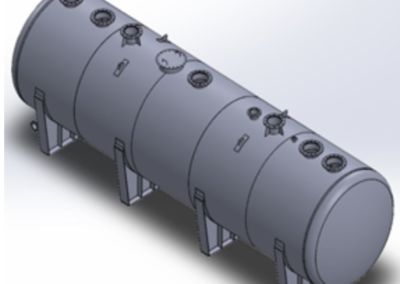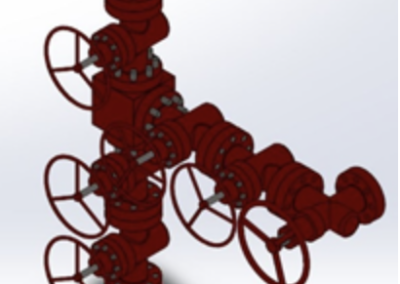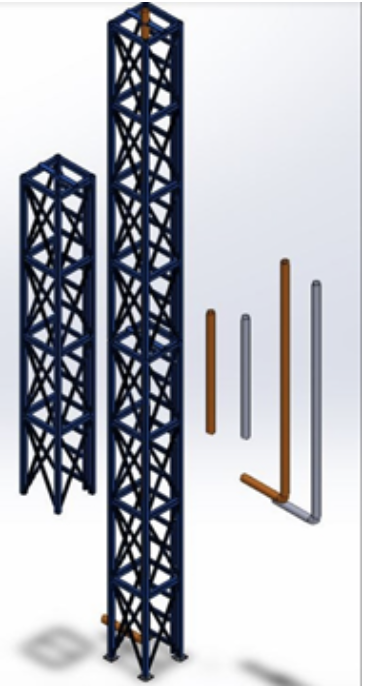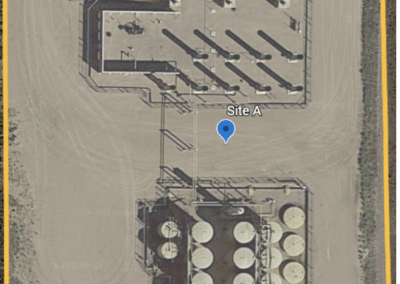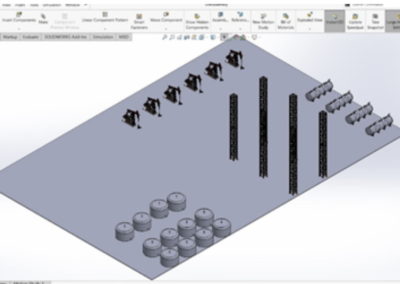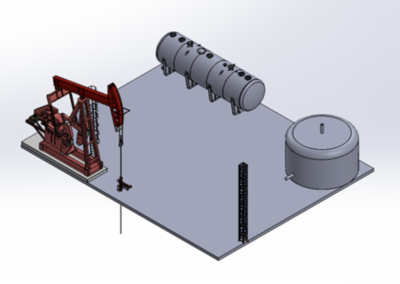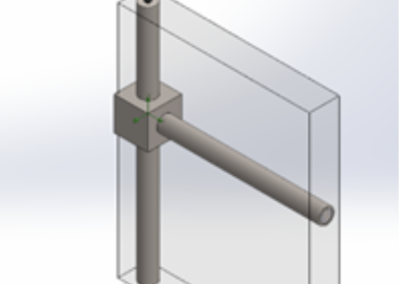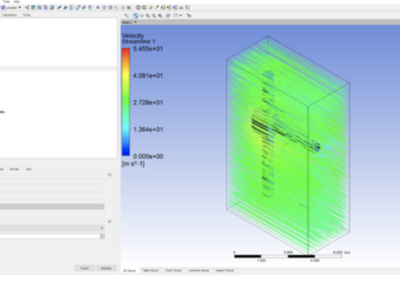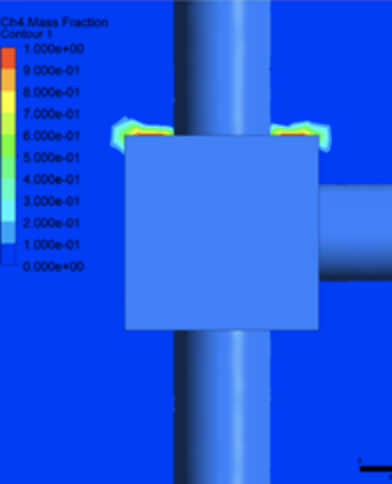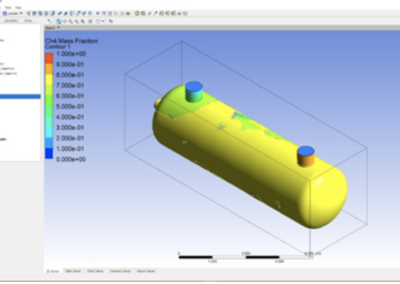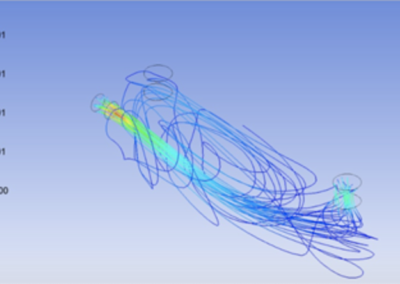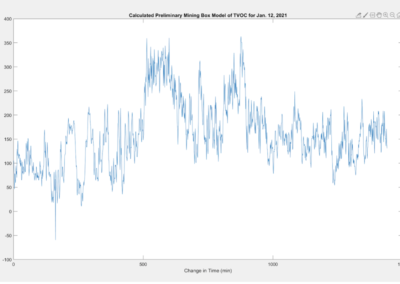Digital Canopy for Monitoring Methane Emissions
Overview
The Capstone Design team was commissioned to create a simplified digital twin of an oil and gas production site that would simulate and predict the methane emissions from the field. Over the course of the project, the team has selected two elements from these fields to run end to end simulations on, and simplify them to get more accurate estimates. The team ran end to end simulations on a very simplified wellhead and oil and water separator. The simulation process included creating the models in SolidWorks, then transferring these models to ANSYS Fluent to run CFD simulations. These simulations output a data set of methane in that specific element, and this data set was the input into a MATLAB coded dispersion model, that tracks the methane leaking from the element to a sensor.
Methane Monitors Zoom Room
Use the link below to join us live from 8:00 – 10:30 a.m. on April 29th.
https://mines.zoom.us/j/94383054215?pwd=TFpPczNsdC9JS2NNSFhvcm5QWU1jZz09
Please use passcode: 607302
Or iPhone one-tap: 13126266799,94383054215# or 16465588656,94383054215#
Or Telephone: Dial: +1 312 626 6799 (US Toll) or +1 646 558 8656 (US Toll)
Meeting ID: 943 8305 4215
Team Members
- Mandolin Collins
- Shelby Diesen
- M. Aliff Azmeer,
- M. Jauhar Zahari
The Client
- James Crompton, Professor of Practice
Acknowledgements
Jim Crompton – Client
Dr. Handorean – Dispersion Model Advisor
Dr. Richard Gilmore – Fluent Advisor
Dr. Jeffrey Ackerman – SolidWorks Advisor
Will Daniels – Data Advisor
Professor Arkadan – Project Advisor
Video
Elevator Pitch
Welcome to the design showcase, and thank you for visiting our project website! We are the methane monitors and our capstone design team was tasked with creating a ground level digital twin of an oil and gas production site in Fort Lupton, CO, with the goal of monitoring the methane leakage points in the site, and to eventually track and predict these leak events. We accomplished this goal by creating a model with three integrated parts. These parts are SolidWorks models, ANSYS Fluent simulations, and a dispersion box model. Our final product is an integrated system of systems where the output of our solidworks model is the input of our computational fluid dynamics (CFD) simulation; the pressure-velocity relationship we calculate in our CFD simulation is then used as a variable in an air dispersion model of volatile organic compounds on the site.
Design Approach
When presented with the problem for our project, we looked at many different avenues in which to solve this problem. The team started with SolidWorks, to build digital replicas of the elements on the Fort Lupton Oil Site, but soon realized a different software would be needed to run the methane simulations. The team then switched, and used ANSYS Fluent, by uploading the SolidWorks models already created, and ran CFD simulations to gather a methane leakage output. After gaining a methane data set, the team needed a way to track how the methane was dispersing through the air, so we were able to program a MATLAB dispersion box model that takes the methane data set from Fluent as the input, and tracks the spikes in the surrounding air over time.
This design approach adapted and changed a lot over time. At first, we were planning on doing all of the CFD fluid simulations inside of SolidWorks, but as time went on, the team came to realize this was not a viable solution, and switched to using ANSYS Fluent for our simulations. We also had the idea to use LABView at the very beginning of the project, to help with the detection of leaks, but without having a more accurate representation of the elements, this would have proven to not be as helpful, so instead we switched to trying a dispersion model. The team started with a different approach to model an entire site, but in the end, as we encountered challenges and set-backs, we adapted our design approach to include two end-to-end simulations and models that follow the flow chart below.
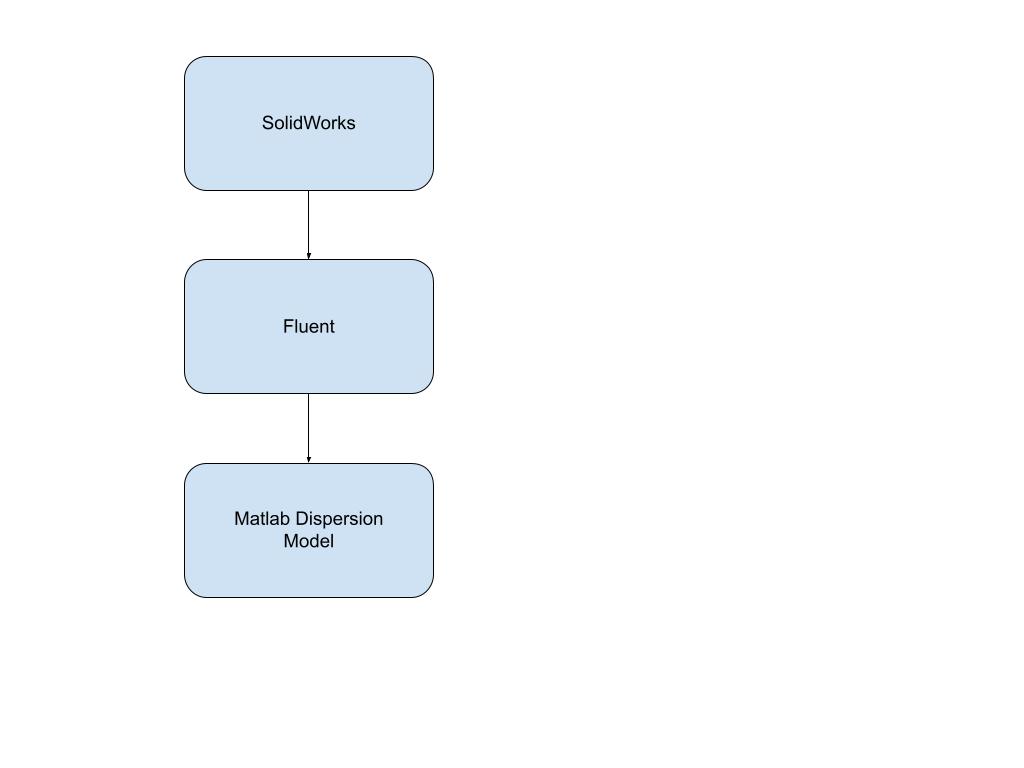
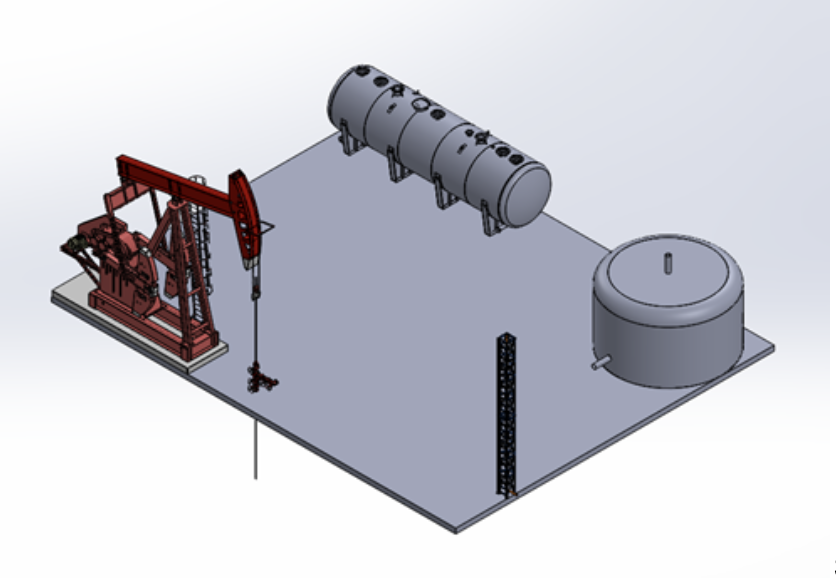
Design Solution
In creating a digital twin of an oil and gas field, our team developed an integrated system of systems to predict the possible effects of methane leaks. The process includes three steps: a SolidWorks model of the oil and gas field, a computational fluid dynamics simulation (CFD) of two elements, and a mathematical air dispersion model of methane leaks. We managed to complete the fluids simulation for two elements: the oil and gas separator and wellhead.
The figure below shows the flow of the integrated system of systems we used to solve the problem. On the left our SolidWorks model was built based on a google earth image of our site, and then further simplified to only contain one of each element.
The center shows the steps for the CFD simulation conducted in Ansys Fluent. The output of this simulation was a pressure vs. velocity graph of a leak on each of the elements tested. From the velocity and area of the leak, we were able to calculate the flow rate of methane escaping.
The flow rate was then used in our air dispersion simulation. We built the air dispersion model using an equation adapted from the mining industry of a box model. The box model calculates the change in overall concentration of contaminants within a box of air; we set the boundaries of our box at the locations of the Project Canary sensors.
Outputs from the dispersion model represent the emissions dejected by the Project Canary sensors present on the oil field. A statistical analysis using change-points was performed to compare trends in the CFD model of the elements to the collected Project Canary data. Between the hours of 8 p.m. and 12 a.m. there is usually a change in background methane detected due to changes in sun exposure and wind speed, and we found this to usually be the aggregate change-point for a full day. We determined that if the aggregate change-point occurred outside of this time window, it is an indication of a leak large enough to require immediate action.
These steps are replicable for the other three elements of interest: artificial lift kit, flare stack, and tank battery. In the future, the work performed here has created the foundation for a fully integrated system of an entire oil and gas field.
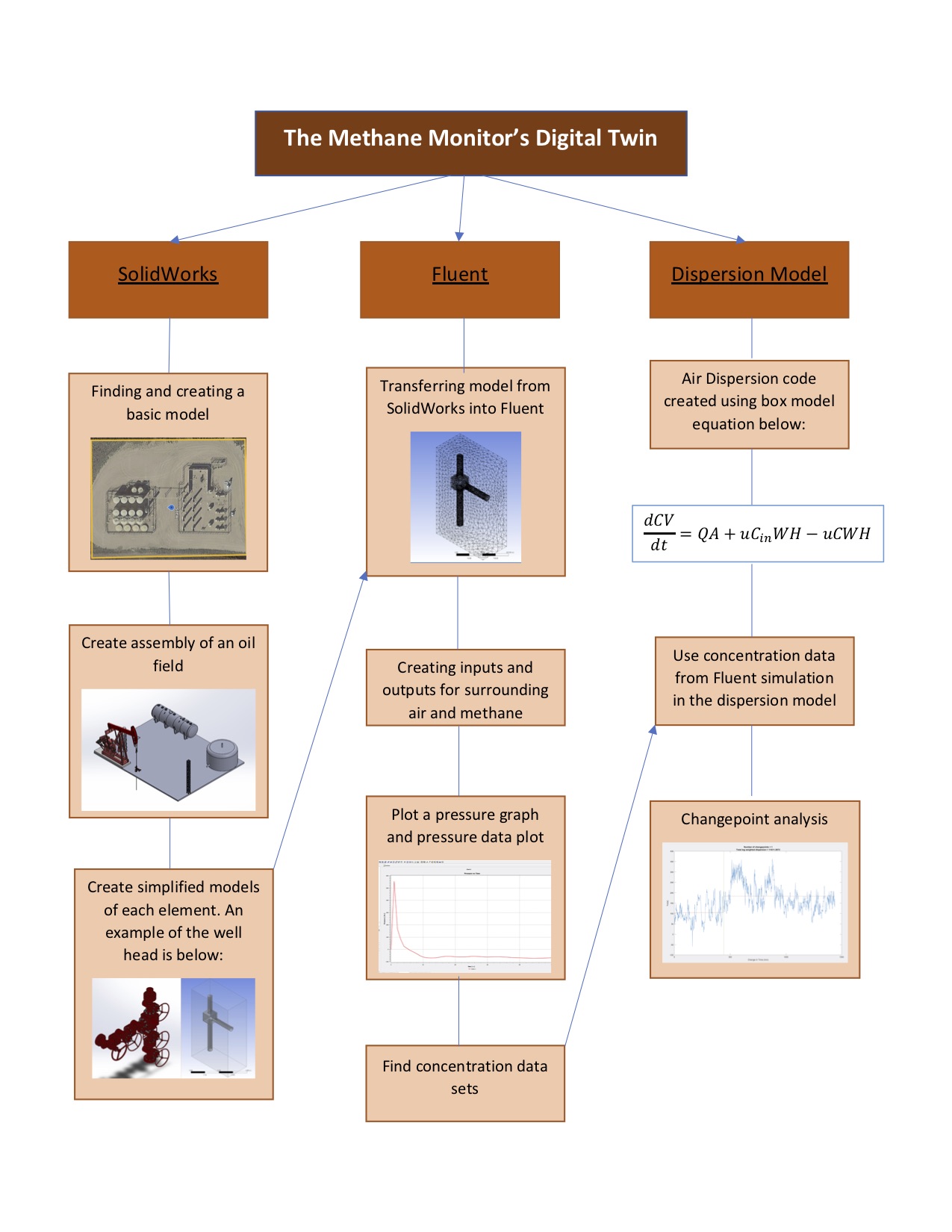
Next Steps
Moving forward, the team that is taking over this project should proceed with completing the simulation of the rest of the subsystems in the oil field such as the tank battery, artificial lift kit and the flare stack. The team should also improve the accuracy of the inputs when setting up the simulations of each subsystem model. If time allows, the team should work on setting up the simulation of all the elements in the oil field simultaneously. This will allow the team to determine the concentration of methane leakage dispersed through the surrounding environment accurately.The next team should also try to implement a gaussian model and then compare their results with our Box Dispersion model. After determining the accuracy of the dispersion model, the next team should try to scale their model to include the whole site.
Meet the Team
Shelby Diesen
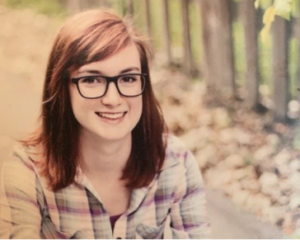
Shelby Diesen is a senior in environmental engineering. She is also working towards an ASI in Computational Applied Mathematics. After graduation, she hopes to work on modeling pollution flows and responsible extraction processes. In her free time, Shelby enjoys touring superfund sites and learning about the history of industries in her area.
Mandolin Collins
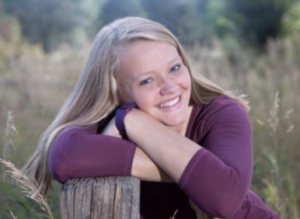
Mandolin is a graduating senior in Electrical Engineering. Her
professional interest and experience has primarily been in the
software industry. After graduation this May, Mandolin will
be getting married and then take a few months off before starting
her full time job in the telecomm industry with Lumen Technologies.
Mandolin grew up in the Westminster, CO area the majority of her life,
and will continue to live and grow there for the foreseeable future.
Some of Mandolin’s interests include reading, weight lifting, and painting.
Throughout her scholastic career, Mandolin has been a member of SWE, and
mentored in coming freshman girls in electrical engineering. Mandolin also
has been a special needs tutor since 2015, and plans to continue mentoring and
tutoring younger people throughout life.
Muhammad Jauhar Zahari Bin Abdul Aziz

Muhammad Jauhar Zahari Bin Abdul Aziz is an international student from Malaysia. He is a mechanical engineering major with passion in reading and playing basketball. He is currently working in the Mines IT department as a consultant and have some knowledge in repairing devices with software and hardware issues. He also has some coding knowledge especially in C++ and Matlab. In this project, he mainly works with the modeling part and contributed a lot of fresh ideas.
Muhammad Aliff Azmeer Azhari
 Muhammad Aliff Azmeer Azhari is an international student from Malaysia majoring in Mechanical Engineering in Colorado School of Mines. He has a deep interest in using modelling software to solve real world problems. With the advantage of having taken and passed the Certified SolidWorks Associate in Mechanical Design, 3D modeling, design concepts and sustainable design can be done smoothly and productively. Recently, he started learning more about ANSYS Fluent which can be useful for Computational Fluid Dynamics analysis.
Muhammad Aliff Azmeer Azhari is an international student from Malaysia majoring in Mechanical Engineering in Colorado School of Mines. He has a deep interest in using modelling software to solve real world problems. With the advantage of having taken and passed the Certified SolidWorks Associate in Mechanical Design, 3D modeling, design concepts and sustainable design can be done smoothly and productively. Recently, he started learning more about ANSYS Fluent which can be useful for Computational Fluid Dynamics analysis.

